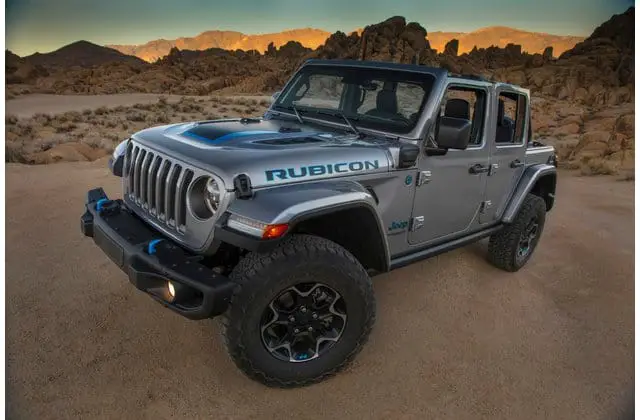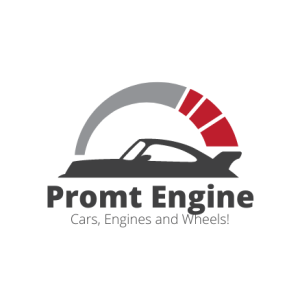Four-wheel Drive, better known as 4WD or 4×4, is a vehicle with four wheels, as the name clearly shows. Four-wheeled vehicles can be handy as they are preferred over Two-wheel drives or AWD vehicles. These vehicles are also widely used and are now considered standard vehicles.
However, a Four-wheel driver, or short 4WD, means that your car has two axles that provide torque to four axle ends, optimizing a system for off-road driving conditions. “4WD” cars are equipped with a transfer case that switches between 2WD and 4WD operating modes, either manually or automatically.

Just as it is beneficial, Four-Wheel Drive can also be very harmful. In some reported cases, too much acceleration of Four-Wheel Drive causes accidents and, sometimes, as a result, can be as fatal as death. The experts recommend driving a Four-wheel Drive High at a maximum speed of 55MPH and no higher than that, as it can lead to dangerous accidents or police chase after you.
How Fast Can You Drive in 4WD High?
I have achieved 65 mph in a 4WD car. However, you can drive your 4WD High vehicle at speeds up to 55 MPH because of the “speed limit.” The best maximum speed for a car engine is 45 mph (4WD-high).
It is essential to know that if you drive in 4WD-Lo, you should not exceed ten mph.
All-wheel Drive allows the car to move on wet and snow-covered asphalt. It offers additional grip in situations where it is almost non-existent, such as driving on ice, but it helps a little when cornering and practically nothing when braking. Even the most dominant 4WD models can lose control when crossing icy surfaces, slippery curves, or impaired road conditions.
In addition to additional mechanical complexity, which can mean more expensive maintenance and repair costs, the all-wheel drive also adds more vehicle weight, which negatively affects expenses. Also, an all-wheel drive causes more tire wear for extended driving.
Is it Bad To Drive Long Distances in 4WD?
It is perfect to drive long distances in 4WD.
Long rides and distances can mean anything from a simple car trek to Highway rolling. You don’t need to sweat if you have second thoughts about driving your Four-wheel drive for a long distance. Driving experts confirm that it is entirely safe to take your 4WD for a long distance as long as you are driving at an average speed and are not violating a mechanical issue in the car.
How Long Can I Use 4×4?
If you want to drive your 4×4 car without a break, you can go for 48 hours without stopping. However, you need to do it properly before and after maintenance.
You can drive your Four-Wheel Drive if the vehicle gets enough fuel and proper maintenance. According to some experiences, you can continuously keep driving your 4×4 car for two days, minus the maintenance and other possible issues in your vehicle.
Is it OK to Drive in Auto 4WD on the Highway?
Driving in an Auto 4WD High gear on highways is safer than in an Auto 4WD Low load.
According to the experts of Four-Wheel Drive, driving an Auto 4WD in High gear on highways can be safer than driving in 4WD Low gear because of the Auto’s steadier driving experience and safe speed range in High gear.
What Happens if You Drive in 4-Wheel Drive?
Continuous running of 4×4 vehicles can cause damage to their drivetrain engines.
If you consider yourself an excellent driver, handling and maintaining a 4WD car would be a piece of cake. In addition to the high and low gears of 4WD vehicles, the four-wheel Drive should not be run at all times as the shifting of loads can cause severe issues in the drivetrain components of the cars, especially if your 4WD is in poor condition.
Why is 4WD Bad on Pavement?
Pavements can damage the 4WD gears, cases, and front axles.
The construction of Four-Wheel Drive is done very differently, as the vehicles can be severely damaged if shifted from different gears continuously in one run. It is disastrous to drive a 4WD on pavements, especially dry pavements because the pavement can damage the front axles of the vehicle, harm the gears, and break the differential cases.
How Fast Can You Go in 4 Lock?
You can go as fast as 40 MPH in a four-lock.
Driving is enjoyable if accelerated to maximum speed, but it can also be harmful. You can drive up to the maximum speed between 30 MPH and 40 MPH in your vehicle’s fourth lock or gear. Just be careful and accelerate with a present state of mind.
How Fast Can You Go in 4×4 Low?
4WD Low can go as fast as 10MPH.
If you are a Four-Wheel Drive owner, such as an SUV owner, you must be aware of the possibilities caused by high-speed driving. To avoid any fatal accidents, you can drive your 4×4 Low as fast as 10 MPH, safe and fast.
Should You Use 4WDRainRain?
Yes, you could use 4WD cars in Rainrain.
4WD vehicles are designed to avoid slipping while driving and are well-built for driving over surfaces like icy, rainy, muddy, and other related factors. With this knowledge, you can easily take your Four-Wheel Drive out for a run in rainy weather or even in a thunderstorm.
Can You Switch From 4WD to 2WD While Driving?
You can switch between 4WD to 2WD only at slow speed or driving through single lanes.
If you are driving at a slow range speed or along a straight driving path, you can switch between 4WD to 2WD as per your liking. However, it would be best to be careful, as changing your car during high-speed acceleration can lead to accidents. Always switch between gears at a slow speed.
Does Auto 4WD Use More Gas?
Yes, 4WD uses more gas than others.
As the Auto 4WD mode is better constructed than AWD or 2WD, it requires and consumes more fuel or gas. In short, regularly driving on 4WD can be very costly.
What is 4 High Used For?
4WD High is used for driving on unruly pathways under severe conditions
Driving at 4WD High gear is recommended under challenging conditions, such as snowy tops, rainy and slippery surfaces, or uneven tracks or highways. 4WD is best for such routes as their traction control is produced explicitly.
Can You Drive in 4H all TimeTime?
No, you cannot continuously drive 4H at all times.
As stated earlier in the text, mechanics, and experts do not suggest driving in 4H all the time because it consumes more fuel than any other gear and can severely damage your car engine.
Why is it Harder to Turn in 4 4-wheel drive?
Due to the spacing between the outside and inside wheels, it is harder to make sharp turns when driving a four-wheeled vehicle.
It is pretty challenging to turn a four-wheeler because when driving in 4WD on traction surfaces like asphalt or concrete, it is hard to take turns since the outside wheels should be quicker than the inside ones to cover a certain amount of perimeter, and expert four-wheeler drivers can only perform those turns.
Does 4×4 Work in Reverse?
Yes, Four-Wheel Drive works in reverse.
Reversing is very easy if you drive a 4WD vehicle on low-traction surfaces like icy, muddy, or soaked grounds. It is indeed true that 4×4 cars work in reverse, too.
Is 4 High or 4 Low Better For Snow?
For now, 4 High is better to drive in than 4 Low.
As stated in the text above, it is preferred to drive in 4 High because of better traction control on icy grounds or in severe snowy conditions. 4 High gear also serves the vehicle with better speed.
Should I Turn off the Traction Control in 4WD?
Suggestively, do not turn off the traction control of your 4WD.
Keeping your 4WD vehicle’s traction control on is recommended to be relatively safe, as it reduces the chances of damage and keeps the Drive steady and secure. However, you drive to shut your traction control off on excessively muddy grounds to avoid getting stuck in the mud.
How Often Should I Engage 4WD?
Every few months, you should engage your 4WD.
The 4WD mechanics and engineers recommend that to keep your Four-Wheel Drive running and maintained, engage the vehicle every few months with the total aid of emergency supplies and techs.
Does 4-Wheel Drive Help on Black Ice?
No, 4. Drivedfour does not help on black ice until and unless the traction control is on.
Driving on ice is considered very dangerous, and if you are driving a four-wheeler, the consequences could be more harmful. A Four-Wheel Drive tends not to cooperate if your vehicle slides off in another direction. However, with its traction control on, it can help, but it is best not to drive during icy conditions.
Does 4-Wheel Drive Help Hydroplaning?
Yes, a 4-wheel drive helps the driver in hydroplaning conditions.
In addition to its brilliant features, a 4WD helps the driver with hydroplaning, as all four wheels in the Four-Wheel Drive are controlled by the power of traction controls. These vehicles can surely help in the stated situation.
Is 4WD Safer?
4WD vehicles are safer than other car modules.
According to what you and I have learned about 4WD, they are safer and more developed than 2WD or AWD vehicles, and their built-in traction control on never paths and grounds and speed range.
How Do You Know if 4WD is Engaged?
By checking the front of the car axles, you can find out if 4WD is engaging or not.
To determine whether the 4WD mode is engaged, drive your car in a smooth circle in your yard or anywhere spacious. Notice if the car’s front end is grabbing or biting. If it is not, then 4WD is not engaged.
Does 4 Wheel Drive Help Break?
No, 4WD does not help in braking.
It is to clarify that modes like 4WD are manufactured to accelerate your four-wheeled car. Likewise, 4WD has nothing to do with brakes and cannot help you in that sector.
In brief, a 4WD is a very efficient and safe mode to drive your vehicle in, besides the other modes, as 4WD serves with a safe speed and traction-controlled engine system.
